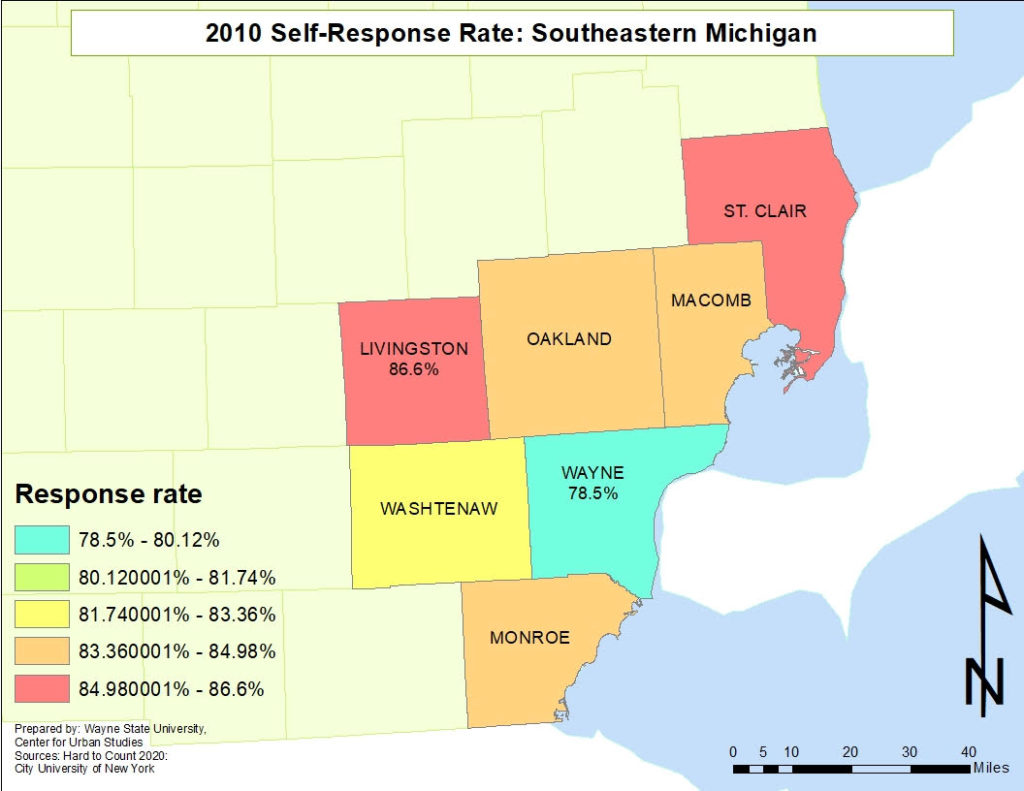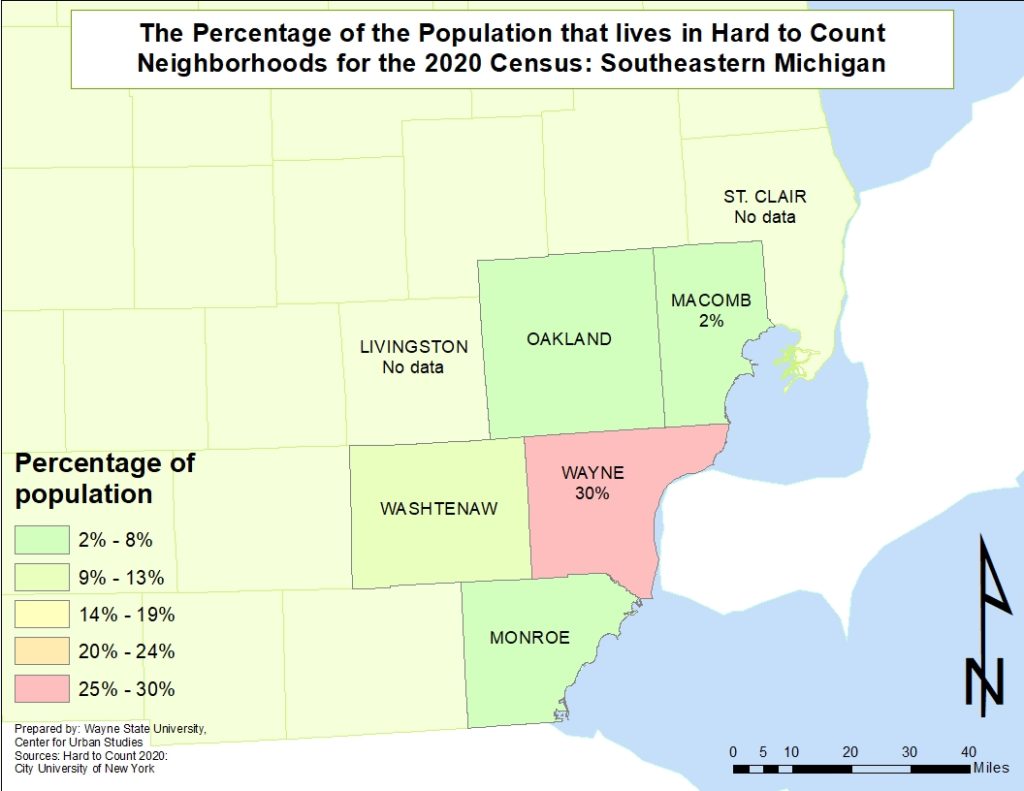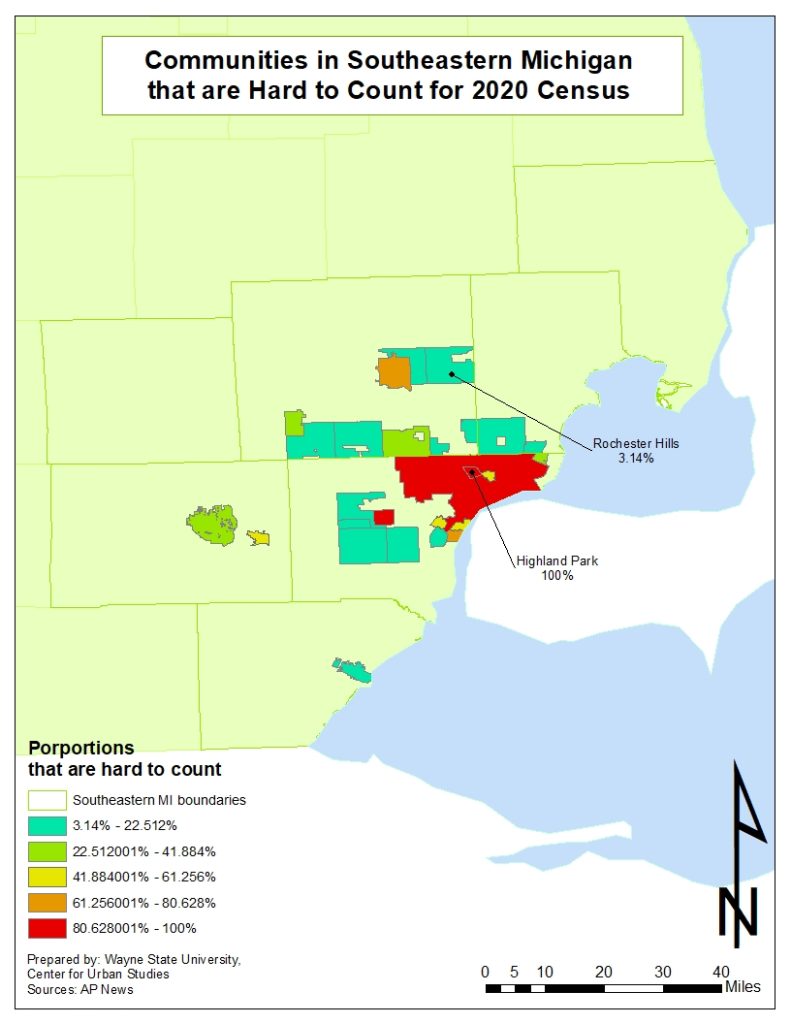The numbers are in, and according to 2020 Decennial Census data Michigan’s overall population grew to 10,077,331, but Detroit suffered a population loss for yet another decade. According to the recently released data, Detroit’s 2020 population was recorded at 639,111, a decrease from the 713,777 2010 Census population. The City of Detroit’s population was at one point larger than every other county’s population in the State of Michigan (1.8 million people in 1950), except for Wayne County (it is located in Wayne County. However, as the first chart below shows, that began to change in 1990 when Oakland County’s population exceeded Detroit’s. Then, in 2010, Macomb County’s population also exceeded Detroit’s population. According to the most recent Census data, Oakland County’s population was 1,274,396 and Macomb County’s population was 881,217 in 2020. Wayne County, including the City of Detroit, still has the largest population in Michigan at 1,793,561. However, Wayne County also continues to lose population, in part because of Detroit’s population loss.

Between 2010 and 2020, the City of Detroit and St. Clair and Wayne counties were the only large units of government to lose members of their population. The City of Detroit had the largest percent loss at 10.5 percent, or 74,666 people. Wayne County experienced a 1.5 percent loss (27,023) and St. Clair County experienced a 1.6 percent loss (2,657). Tax foreclosures have been cited as a reason for the Detroit’s continued population loss. Note, however, that Detroit lost fewer people in the last decade than the previous decade–74,666 from 2010 to 2020, compared to the 201,530 population loss between 2000 and 2010. Detroit Mayor Mike Duggan said he plans to appeal the recently released Census numbers for the City, as he firmly believes they are inaccurate. Part of his reasoning? The 2020 Census accounted for 254,000 occupied households but according to DTE there are about 280,000 residential households paying electric bills. In comparing these two data points, there is a discrepancy of 25,000 occupied houses with running electricity—housing units he thinks the Census missed.
Wayne County officials on the other hand recognize that population loss continued, but chose to see progress since the total loss between 2010 and 2020 was about 27,000 people whereas, between 2000 and 2010, the population loss was about 240,000 residents, so there has been a substantial decline in the loss. According to a recent Free Press article, part of population loss Wayne County experienced was due to the loss Detroit experienced, but that was offset by population gains in other municipalities in Wayne County. Furthermore, a large portion of the State’s population remains concentrated in Wayne County (about 1/5 of the population).
The population loss experienced by Detroit and Wayne and St. Clair counties was likely the gain for other area counties. According to the data, Washtenaw County experienced an 8 percent population increase between 2010 and 2020 (27,467), Livingston County experienced a 7.1 percent increase (12,899), Oakland County experienced a 6 percent population increase (72,034) and Macomb County experienced a 4.8 percent increase (38,865).
In a future post we will also be looking at the population gains and losses at the municipal level in Southeastern Michigan. A few notable regional gains and losses to mention now though are:
Population Gains Above 20 Percent
•Hamtramck, where the population increased 27 percent between 2010 and 2020 (from 22,423 to 28,433)
•Salem Township, where the population increased 25 percent ( from 5,627 to 7,018);
•Oceala Township, where the population increased 23 percent (from 11,936 to 14,623);
•Lima Township, where the population increased 22 percent (from 3,307 to 4,024)
•Dundee Township, where the population increased 21 percent (from 6,759 to 8,145);
•Saline Township, where the population increased 20 percent (from 1,896 to 2,277);
•Novi Township, where the population increased 20 percent (from 55,224 to 66,243);
Population Losses Above 10 Percent
•Scio Township, where the population decreased by 13 percent between 2010 and 2020 (from 20,0081 to 17,552); •Detroit, where the population decreased by 10.5 percent (from 713,777 to 639,111).

With population changes comes changes in demographics as well. For example, in Detroit, the Hispanic white population grew to make up 9.5 percent of the City’s demographic and the Hispanic or Latino population to grew to makeup 8 percent of the population.
To fully grasp the regional and statewide population gains and losses we needed to understand just who left one area and moved to another. Migration to the suburbs, particularly to Macomb and Oakland counties by the City’s white population, is what initially triggered Detroit’s population loss in the 1950s. This population loss has continued through 2020. Demographic changes have continued through today and with the release of new Census data, Drawing Detroit will show just how Southeastern Michigan, and Michigan overall, has changed in the last decade and beyond.


